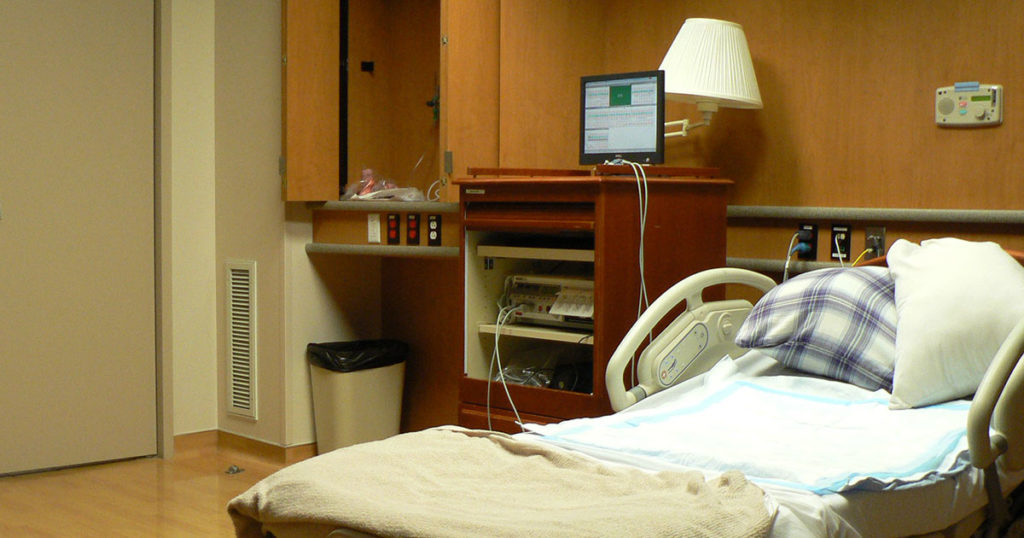
Over the past 16 years, my family has experienced four extreme self-isolations. Not just social distancing, but real lockdowns where we had almost no contact with others for months, not just weeks. As is true in the present crisis, we isolated for medical reasons. We faced cancer.
Hundreds of thousands of others around the world who have had risky pregnancies, organ transplants, or illnesses that required immune-suppression have known self-isolation. The experience has not been uncommon in the contemporary era. In those cases, being isolated was a matter of life or death. In the face of a mortal threat, my family embraced isolation and the hope it provided.
Seventeen years ago, when my daughter, Chloe, was just 15 months old, she was diagnosed with a rare, very aggressive, and deadly variety of leukemia. Without treatment, she would succumb quickly. Drug therapy suppressed the disease for a while, but doctors said that she needed to undergo a stem-cell transplant, where drugs would be used to wipe out all the white blood cells, the core of the immune system, and, they hoped, all evidence of disease. The introduction of “clean” stem cells would then rebuild the immune system over time.
The procedure was relatively simple, but the recovery was agonizing. Because Chloe had no immunity, she had to stay in a double-door isolation room for months afterward, as her system slowly rebuilt. The only social interaction she had was with medical personnel and a few relatives and friends. I came and went to work. My wife, Vicki, self-isolated and lived 24/7 with our toddler. Not even a window could be opened for fresh air.
Our daughter could not leave the 15’ x 15’ hospital room for months. Because this was before the digital revolution, we had no smartphones or computers. We did have an in-hospital entertainment system that offered Sesame Street and Baby Einstein. We had clean toys right out of the box. We bonded in the luxury of the given time. We laughed, and we cried. We did not despair but held on to hope.
Eventually Chloe was released and returned home, where we practiced what is now called extreme social distancing. She was severely immune compromised for months. But we gave thanks for the possibility of recovery that isolation offered.
Six months later, the aggressive leukemia returned and we faced another transplant. This time a more difficult procedure involved rebuilding her immune system with cord blood from her newborn sister, Maya. Again, there was the extreme isolation followed by social distancing for months. But we persevered, and she fought back the disease.
Eight years later, our daughter suffered cancer yet again. This was a different one, but as before, she had to undergo chemo and radiation, which wrecked her immune system. We were familiar with the isolation routine. Eventually she returned to health.
Four years ago, Vicki battled breast cancer. Chemo, radiation, and isolation. We knew the routine. She survived and is healthy today.
We never wished for isolation, of course, but we embraced it when it was needed. We were fortunate to have had the option of isolation. The alternative—no isolation—was a road to almost certain tragedy. We were not rich, but we had good medical insurance and could afford to minimize our interaction with others. Our home had a nice deck where we could enjoy fresh air and sunlight. My work allowed me to join my wife and daughters at intervals during the day.
Today, we are isolated again. Seventeen years ago, a random, common bug, which might have given a healthy person a sore throat, could have taken over and destroyed my daughter’s body. We were anxiety-ridden for months. Today we are maintaining calm.
Four times before, isolation was never really an option for us. We had to isolate. Today, it is the most positive action that regular people like us can take. We must isolate.
I worry about the millions of people in the world who cannot isolate, even if they want to. They live in dense complexes, in houses that can’t be sealed off. They are required to go to work, or cannot avoid social contact in order to obtain food and water. Not everyone has food-delivery services, nearby open spaces, work-from-home jobs, or the luxury of virtual interaction. Social position shapes the isolation experience, and even creates the possibility of enjoying its benefits.
Today, I sincerely appreciate that my family can shelter in place away from others. We are holding onto hope and will get through this, as we did those four times before.
We are also looking forward to Chloe, now 18, going off to college this fall.

